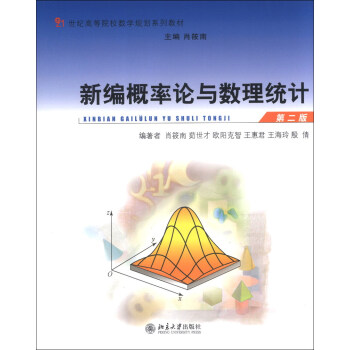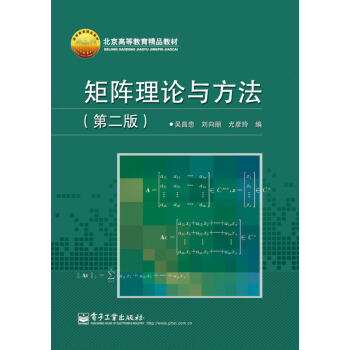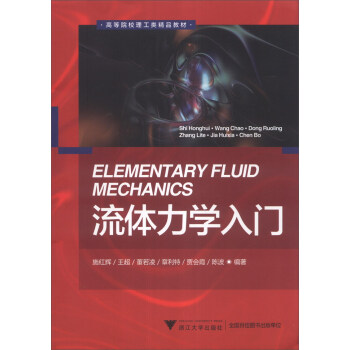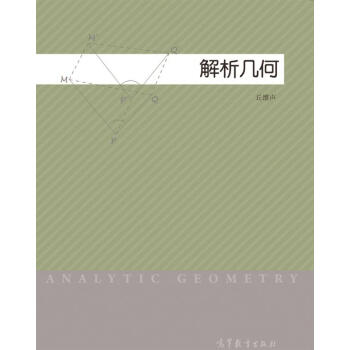![有限元方法(英文版) [Finite Element Methods]](https://pic.tinynews.org/11296973/5398fdb6N065cb297.jpg)

具体描述
内容简介
《有限元方法(英文版)》系统地论述了有限元方法的数学基础理论。以椭圆偏微分方程边值问题为例,介绍了协调有限元方法以及非协调等非标准有限元方法的数学描述、收敛条件和性质、有限元解的先验和后验误差估计以及有限元空间的基本性质,其中包括作者多年来的部分研究成果。内页插图
目录
Preface to the Series in Information and Computational SciencePreface
Chapter 1Variational Principle
1.1 Sobolev Space
1.2 Poisson Equation
1.2.1 Dirichlet Problem
1.2.2 Neumann Problem
1.3 Biharmonic Equation
1.4 Abstract Variational Problem
1.5 Galerkin Method and Ritz Method
Chapter 2 Finite Element and Finite Element Space
2.1 Triangulation
2.2 Finite Element
2.3 Finite Element Space
2.4 Second Order Problem: Simplex Elements
2.4.1 Simplex Element of Degreek
2.4.2 Linear Simplex Element
2.4.3 Quadric Simplex Element
2.4.4 Cubic Simplex Element
2.4.5 Incomplete Cubic Simplex Element
2.4.6 Crouzeix-Raviart Element
2.4.7 Cubic Hermite Simplex Element
2.4.8 Zienkiewicz Element
2.5 Second Order Problem: Rectangle Elements
2.5.1 Rectangle Element of Type(k)
2.5.2 Incomplete Rectangle Element of Type(2)
2.5.3 Wilson Element
2.5.4 Rectangle C-R Element
2.6 Fourth Order Problem: Simplex Elements
2.6.1 Morley Element
2.6.2 Zienkiewicz Element
2.6.3 Morley-Zienkiewicz Element
2.6.4 Modified Zienkiewicz Element
2.6.5 12-parameter Triangle Plate Element
2.6.6 15-parameter Triangle Plate Element
2.6.7 Argyris Element
2.6.8 Bell Element
2.6.9 Cubic Tetrahedron Element
2.7 Fourth Order Problem: Rectangle Elements
2.7.1 Rectangle Morley Element
2.7.2 Adini Element
2.7.3 Bogner-Fox-Schmit Element
2.8 2m-th Order Problem: MWX Element
Chapter 3 Interpolation Theory of Finite Elements
3.1 Affine Mapping and Affine Family
3.2 Affine Continuity and Scale Invariance
3.3 Interpolation Error
3.4 Inverse Inequality
3.5 Approximate Error of Finite Element Spaces
3.6 Interpolation Error of General Element
Chapter 4 Conforming Finite Element Method
4.1 Poisson Equation
4.2 Plate Bending Problem
4.3 A Posteriori Error Estimate
Chapter 5 Nonconforming Finite Element Methods
5.1 Nonconforming Finite Element
5.2 Weak Continuity
5.3 Second Order Elliptic Problem
5.4 Fourth Order Elliptic Problem
5.5 2m-th Order Elliptic Problem
5.6 A Posteriori Error Estimate
5.7 Error Estimate in L2 Norm
Chapter 6 Convergence of Nonconforming Finite Element
6.1 Generalized Path Test
6.2 Patch Test
6.2.1 Patch Test
6.2.2 Weak Patch Test
6.2.3 Sufficiency of Patch Test
6.2.4 Necessity of Patch Test
6.3 Counter Examples of Patch Test
6.4 F-E-M Test
……
Chapter 7 Quasi-Conforming Element Method
Chapter 8 Unconventional Finite Element Method
Chapter 9 Double Set Parameter Method
Chapter 10 Property of Finite Element Space
Chapter 11 L∞ Error Estimate for Second Order Problem
Chapter 12 L∞ Error Estimate for Plate Bending Problem
Bibliography
Index
前言/序言
The finite element method has achieved a great deal of success in many fields since itwas first suggested in the structural analysis in the fifth decade oflast century. Todayit is a powerful numerical tool solving partial differential equations. The scholars inour country contributed much to the foundation and development of finite elementmethod. Feng's work is original, independent of the West, to the foundation of thefinite element method.The basic idea of the finite element method is using discrete solutions on finiteelement spaces to approximate the continuous solutions on infinite dimensional space V according to the variational principle. The typical steps of constructing finiteelement spaces are the following.
(1) The domain S2, the continuous solution defined on, is subdivided into somesubdomains, which are called elements.
(2) On each element, an m-dimensional polynomial space and m nodal parame-ters are selected, such that each polynomial in the space is determined uniquely bya group of nodal parameters. The function values and derivatives at some points onthe element are often taken as the nodal parameters.
(3) A piecewise polynomial space Vh. on domain l2, called finite element space,is obtained by linking the nodal parameters on elements in some way.
For the mathematical foundation of the finite element method, there is a well-known result:
The approximation of jinite elefme,nt solutioln to the treal solution is dependenton the approximation of jVnite element space Vh, to the space V, provided Vt is asubspace of V.
The approximate property of the finite element spaces can be dealt with by theinterpolation theory of the finite elements.
用户评价
当我第一次拿到这本《有限元方法》(Finite Element Methods)时,就被它厚重的质感和精美的印刷所吸引。翻阅内容时,我发现它对有限元方法中的各个关键要素进行了系统性的介绍。从基本的单元选择、插值函数选取,到荷载和边界条件的施加,以及最终的方程组求解,都做了详尽的论述。书中对不同形状单元(如三角形、四边形、四面体、六面体等)的特性和适用范围进行了详细的比较分析,这对我选择合适的单元类型非常有帮助。此外,书中还涉及了高阶单元和非协调单元等更高级的概念,为我进一步深入研究提供了方向。我尤其喜欢作者在讲解数值稳定性问题时,给出的深入分析和改进建议,这对于保证计算结果的可靠性至关重要。这本书就像是一本百科全书,涵盖了有限元方法中几乎所有重要的方面。
评分不得不说,《有限元方法》(Finite Element Methods)这本书的语言风格非常独特。它不像许多学术著作那样枯燥乏味,而是带有一种沉稳而富有启发性的韵味。作者在讲解抽象概念时,往往会穿插一些历史典故或者哲学思考,让原本枯燥的数学和物理原理变得生动有趣。这种“人文关怀”使得阅读过程不再是单纯的知识灌输,而更像是一次与智者进行的深度交流。书中对有限元方法的历史渊源和发展脉络的梳理,也让我对这项技术有了更宏观的认识。我了解到,这项技术并非一蹴而就,而是经历了几代学者的不懈努力和创新。这种对学术传承的尊重,让我对作者的治学态度肃然起敬。读完书中的一部分内容,我感觉自己不仅仅是在学习一种方法,更是在学习一种严谨的科学思维方式。
评分坦白说,一开始我对这本《有限元方法》(Finite Element Methods)抱有一定的期待,但实际阅读体验远超我的预想。这本书的结构设计非常人性化,每一章都以清晰的目录和引言开始,让你对本章内容一目了然。更重要的是,作者在讲解复杂数学模型时,总是会预设读者可能遇到的疑问,并提前给出解答,这种“先知先觉”的设计极大地降低了阅读门槛。例如,在介绍刚度矩阵的构建时,作者不仅给出了详细的推导过程,还特别解释了每一步的物理意义,让我这个非数学专业背景的读者也能理解其背后的逻辑。书中的附录部分也提供了非常有用的补充信息,包括常用的数值积分方法和一些经典问题的解。总而言之,这是一本写给读者的书,它充分考虑到了读者的学习习惯和认知规律,是一本非常易于理解且内容详实的教材。
评分这本《有限元方法》(Finite Element Methods)的封面设计着实引人注目,简洁而富有力量。当我第一次翻开它时,就被其严谨的排版和清晰的逻辑结构所吸引。书中对有限元理论基础的阐述,从最基本的变分原理到更高级的数值逼近方法,都做了循序渐进的讲解。尤其是对数学公式推导过程的细致呈现,让我这个初学者也能逐步理解其精髓。我特别欣赏作者在讲解离散化过程时,没有止步于抽象的数学描述,而是通过大量的图示和实例,将复杂的概念形象化。书中对各种边界条件的处理方法也进行了深入探讨,这对于实际工程应用至关重要。尽管我还没有深入研究到所有章节,但从目前的阅读体验来看,这本书无疑是一部非常有价值的参考资料,能够为我今后的学习和研究打下坚实的基础。我相信,只要我投入足够的时间和精力,这本书一定会成为我理解和掌握有限元法的得力助手。
评分作为一名长期在工程领域工作的老兵,我深知理论知识与实际应用之间的鸿沟。而这本《有限元方法》(Finite Element Methods)恰恰在这方面做得相当出色。它不仅仅是一本理论教材,更是一本指导实践的宝典。书中结合了大量的工程案例,从结构力学到热传导,再到流体力学,几乎涵盖了有限元方法在各个领域的应用。这些案例的选取非常贴合实际工程中的常见问题,并且作者给出了详尽的建模思路和求解步骤。我尤其关注书中关于网格划分的章节,这在实际操作中往往是影响计算精度和效率的关键。书中对不同类型网格的优缺点、以及网格自适应技术的介绍,给我带来了很多启发。虽然这本书的篇幅不小,但其内容充实,信息量大,读起来感觉每一页都物有所值。它为我解决工作中遇到的复杂工程问题提供了一个强大的理论框架和实践指导。
评分It requires a lot of efforts.
评分It requires a lot of efforts.
评分不错不错。
评分It requires a lot of efforts.
评分不错不错。
评分It requires a lot of efforts.
评分It requires a lot of efforts.
评分不错不错。
评分It requires a lot of efforts.
相关图书
本站所有内容均为互联网搜索引擎提供的公开搜索信息,本站不存储任何数据与内容,任何内容与数据均与本站无关,如有需要请联系相关搜索引擎包括但不限于百度,google,bing,sogou 等
© 2025 book.tinynews.org All Rights Reserved. 静思书屋 版权所有







![蛋白质纯化与分析技术 [Protein Purication and Analysis Technologies] pdf epub mobi 电子书 下载](https://pic.tinynews.org/11344367/rBEhUlJzAAAIAAAAAAJh_eD9ySoAAE2YwMMpdwAAmIV534.jpg)


![应急科普丛书:危险化学品使用手册 [Niosh Pocket Guide to Chemical Hazards] pdf epub mobi 电子书 下载](https://pic.tinynews.org/11376463/rBEhWFK7lDQIAAAAAAGPSKUvln8AAHPQQHp6RgAAY9g430.jpg)
![振声学(第2卷)(英文版) [Vibro-Acoustics(Volume 2)] pdf epub mobi 电子书 下载](https://pic.tinynews.org/11381278/rBEhVVLPs5EIAAAAAAKFxJuNEFgAAH50gLgToIAAoXc515.jpg)





![无限维空间上的复分析 [Complex Analysis on Infintie Dimensional Spaces] pdf epub mobi 电子书 下载](https://pic.tinynews.org/11483419/53a8c88bN4c711130.jpg)


